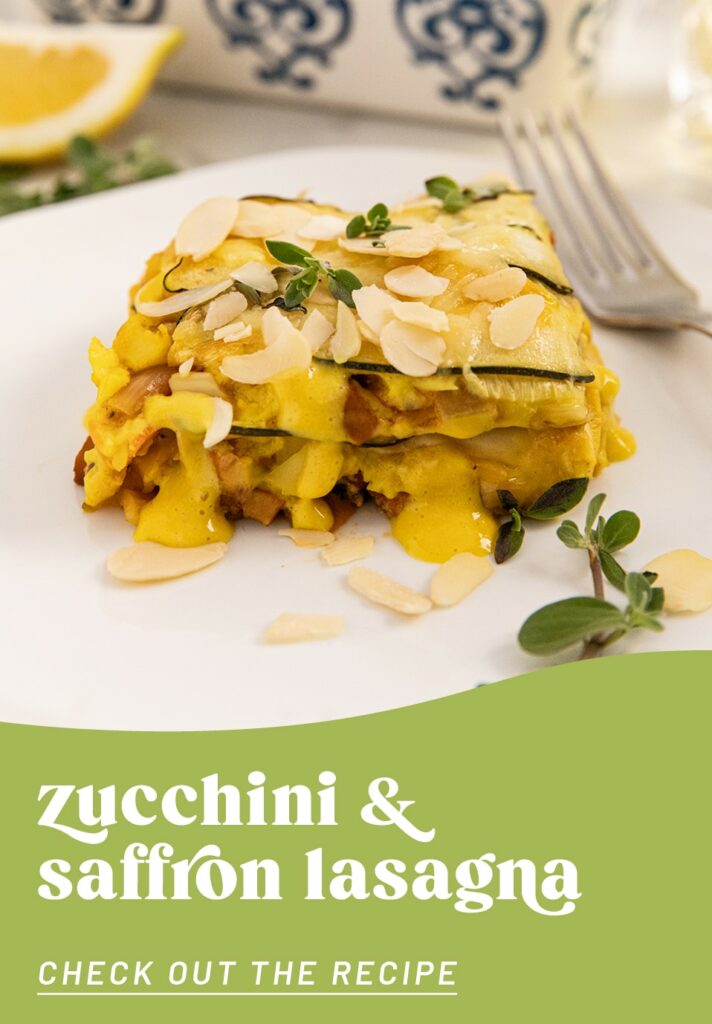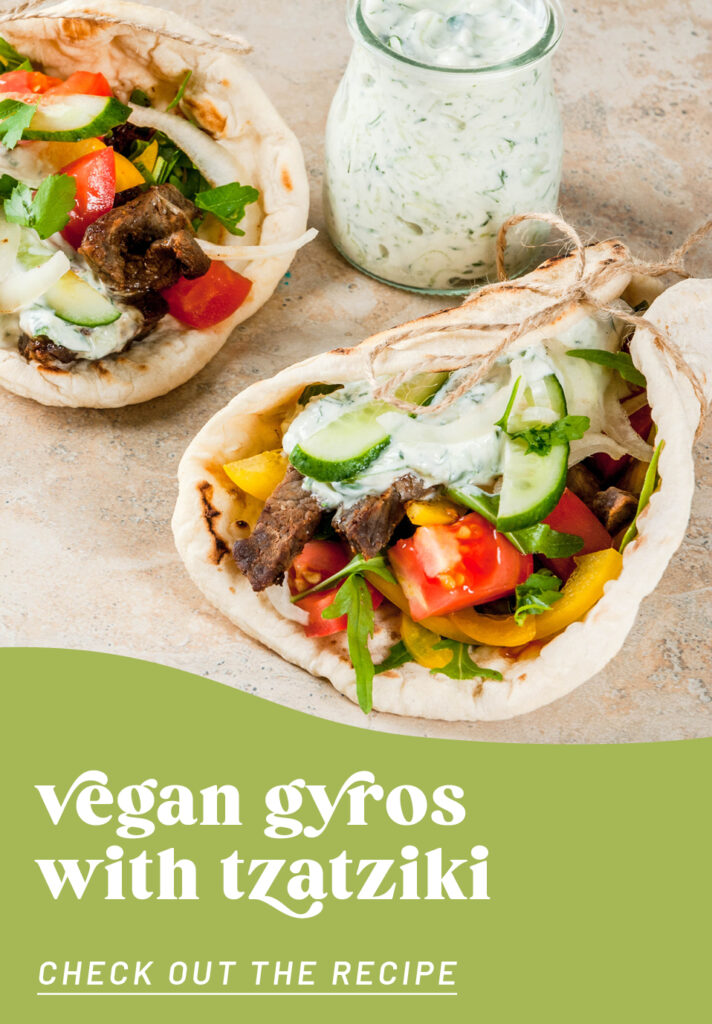V-STORY
Europe’s appetite for change

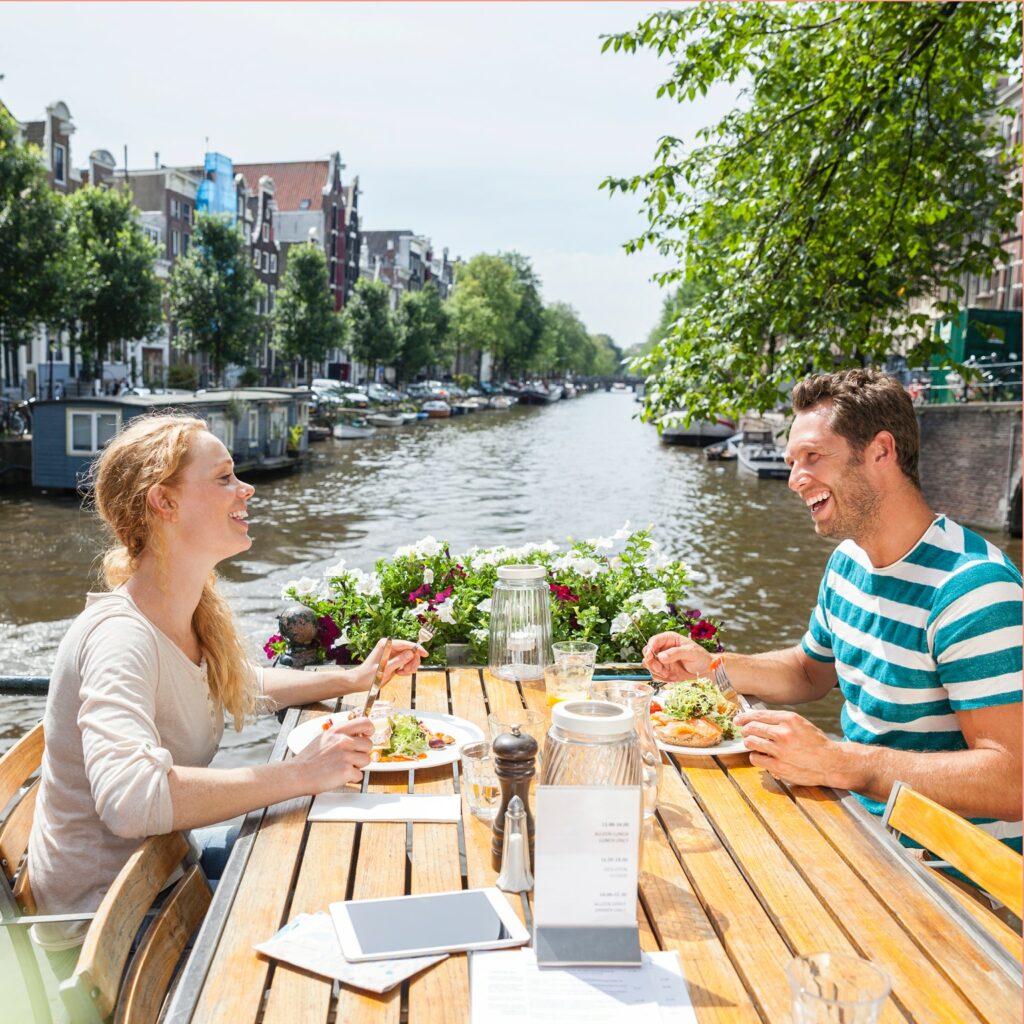
Europe’s plant-based diet – a trend in figures
Meandering through the streets of Paris, you could almost think that the traditional bakeries, famous for their buttery croissants, had given way overnight to cafés boasting vegan pain au chocolat. But this culinary shift is not just a French phenomenon. From the sun-kissed terraces of Spain to the cosy cafés of Poland, the whole of Europe seems to have embarked on a culinary voyage of discovery that combines tradition with trends, seasoned with a big pinch of green.
Here in Germany, there are so many more vegan foods that land on our plates than almost anywhere else. After all, the country has around 1.5 million vegans. And since 2015, the number of vegans has more than doubled! In neighbouring Austria, there are now around 2% vegans, just like here. The available food alternatives are accordingly high. So, you could say that we are a little spoilt for choice when it comes to purely plant-based options. But we are far from having a „vegan desert“ around us. As our Vegan World Trip travel reports show, vegan cuisine is available in many countries.
You might be amazed at the new choice of plant-based foods when visiting neighbouring countries. Which places are particularly worthwhile to go to? What do the statistics say? And what’s happening?


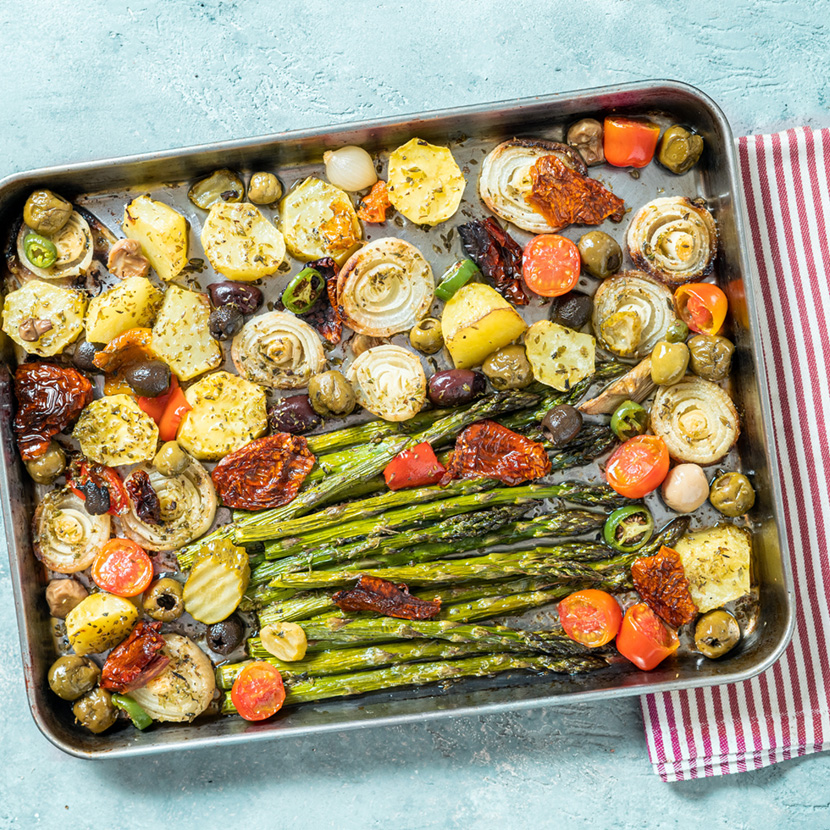
Watch out, make way for veg! Here come the hard green facts¹
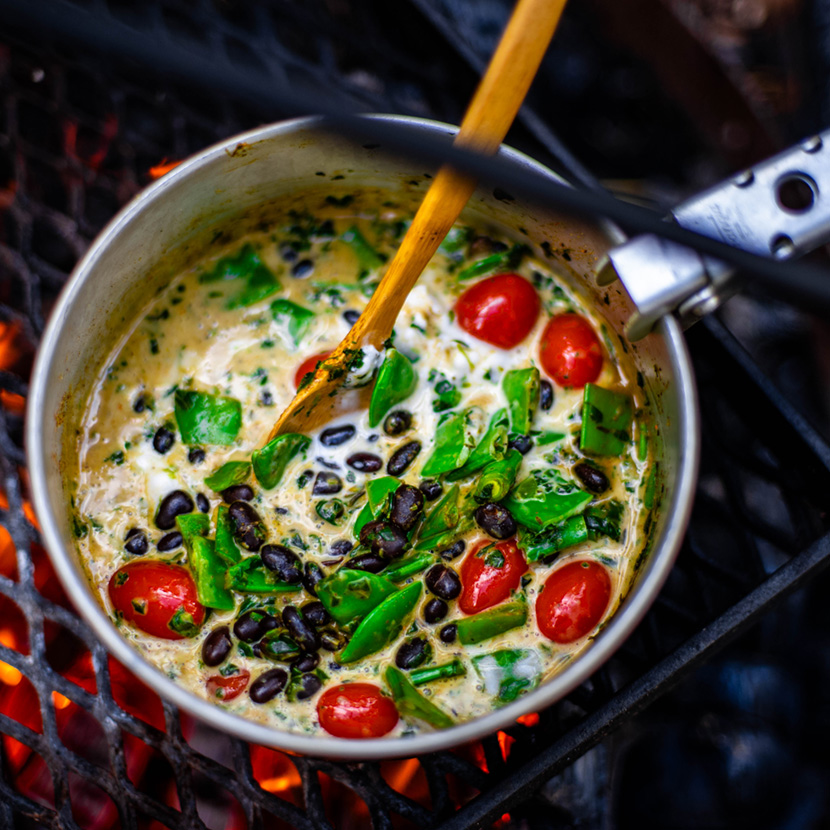
2.1% vegans per country on average, according to statisticians in Europe. The more northerly countries are in the lead. Ireland, Denmark, Norway and Sweden lead the rankings with a vegan share of around 4%.² 51% of meat eaters have secretly swapped the meat counter for the tofu stall – Germany, France and Italy are among the leaders. Would you like to know what the situation is like in the individual countries? We took a closer look …
Germany, with a proud army of 40% flexitarians, seems to follow the motto: „I’m not quite veggie, but I do my best!“. If we move just a little further north, we see the Danish version of the general trend. For Denmark, with a 6% strong pescetarianism, is increasingly saying „Nej tak“ to meat, but continues to fish. Across the Channel, it is the vegetarians who have been leading the way for some time. The UK, with 7% vegetarians, seems to be saying: „Keep calm and eat veggie style“. Our neighbouring country Austria is riding the green wave even more, with 5% vegans.
A total of 38% of Europeans have turned to the colourful side of food and are eating a flexible, pescetarian, vegan or vegetarian diet. The flexi wave knows no age. Whether young or old, the trend runs through everyone – from the boomers at 29% to Gen X and Gen Z to the millennials, who all count around a quarter of their generation as part of the flexitarian lifestyle. It’s as if all generations have decided to throw a vegetarian party together.
Want an example? Then take a look at the trend in pulses, the foundation of green cuisine: 53% of Europeans are planning to increase their consumption of lentils, chickpeas, beans and the like. Imagine pulses becoming the new gold of Europe!
So, in case anyone is wondering what’s going on in Europe right now: it’s vegetables galore! A green, healthy, animal and environmentally friendly revolt that is uniting generations and putting pulses on the throne. Who would have thought it?
What is driving Europe’s food transition?
So why all the fuss? Europe is not only known for its rich history and cultural diversity, but recently also for its experimental attitude towards plant-based nutrition. The reasons are as varied as its countries:
- Health on a plate: „A plant-based diet could save up to 8 million lives by 2050,“ claims a study by the Oxford Martin Programme on the Future of Food. In Germany and the UK, for example, it is not just hipsters who are changing their diet, but people of all ages, lured by the promise of a longer, healthier life.
- A green footprint: accounting for around 14.5% of global greenhouse gas emissions, animal production is not exactly environmentally friendly according to the FAO. In Eastern Europe, countries such as the Czech Republic and Hungary are therefore beginning to rediscover the value of lentils and beans – not only for the palate, but also for sustainable developments on our planet.
- Culinary curiosity: The joy of experimenting with plant-based ingredients has ushered in a new era of culinary creativity in Europe. „Who would have thought that pea protein could taste so good?“ some people might ask. At Velivery, we offer you the right products and recipes.

- Pure compassion: one of the most important motives for a plant-based lifestyle is concern for the welfare of animals. The majority of people who opt for a vegan diet are motivated by the belief that we should not eat our fellow creatures, but rather treat all living beings with respect.
Europe’s vegan kaleidoscope
Each country brings its own flavour to the big vegan pot:
- France:
In the country where 1000 cheeses reign supreme, cheese producers are now experimenting with cashews to emulate the creamy texture of Camembert. Sales of plant-based cheese alternatives have skyrocketed in recent times. A clear sign that even the „Nation de Fromage“ is open to change. Find out more about France’s cuisine and its vegan treasures here.

- Germany:
The German Nutrition Society has set new standards in 2024 with the recommendation that at least 75% of the diet should be plant-based. A clear signal for change in a country that was once known for its love of sausage and schnitzel. Of course, you can find great alternatives to schnitzel, roasts and sausages here again. - Scandinavia:
In countries such as Sweden and Denmark, known for their sustainable lifestyles, veganism is becoming increasingly popular. Sweden is not only at the forefront of pop music and design, it is also a leader in the development and consumption of plant-based drinks and meat alternatives. Denmark’s capital Copenhagen has quickly become a hotspot for vegan gastronomy, with restaurants offering everything from plant-based smørrebrød to gourmet menus.

- Southern Europe:
Italy and Spain, with their deep-rooted culinary traditions, are also experiencing a green wave. Italy, the land of pasta and pizza, now offers a wide range of creative plant-based alternatives that will win over even the most die-hard gourmets. Italy’s South Tyrol region now also has a green heart.
In Spain, which admittedly still occupies one of the last places in vegan Europe, more and more plant-based options are mingling with the tapas. And plant-based versions of traditional dishes such as paella have been given a green slant on the menu. - Eastern Europe: Poland, traditionally known for its hearty cuisine, is experiencing a boom in vegan restaurants. The number of vegans and vegetarians there has doubled in recent years – a sign that plant-based products are no longer just a marginal phenomenon there either.
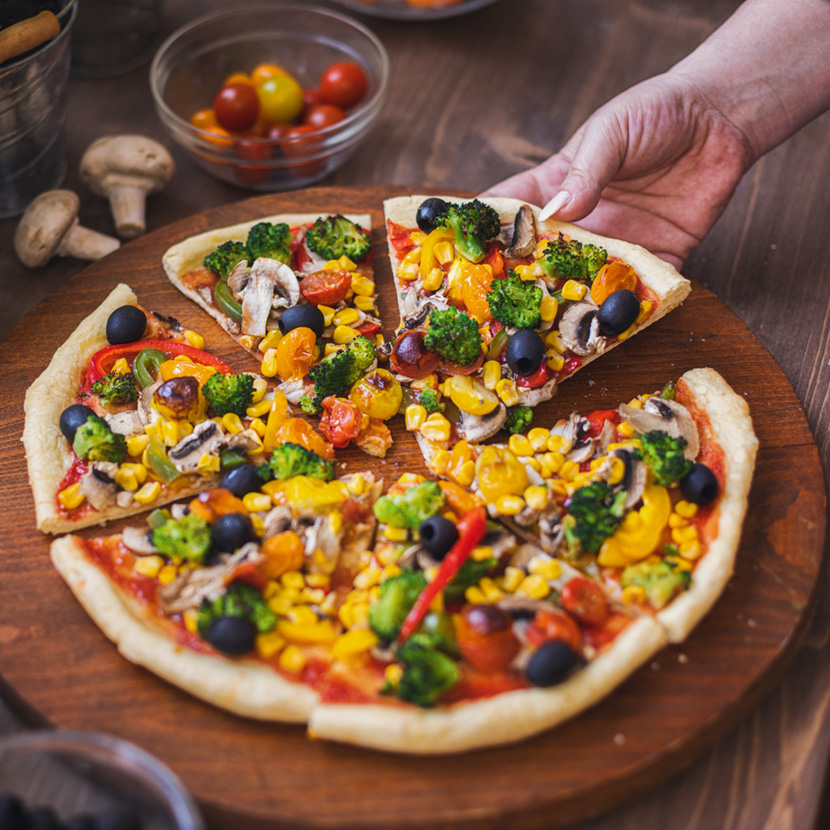
- Great Britain: Across the Emglish Channel, the UK has become a pioneer of the plant-based movement. The UK is already considered the pioneering country for vegetarians, who now make up around 6% to 10% of the population, depending on the statistics. And London is regarded as one of the leading cities for vegan catering worldwide – everything from vegan fish and chips to ethically produced plant-based “steaks” is available here.
The island proves that the movement knows no boundaries. The proportion of vegans is 2%. This makes Great Britain very similar to Germany.
One special feature, however, is certainly the great influence of different national cuisines, such as Indian cuisine, which traditionally offers many vegan and vegetarian dishes.
India itself has a vegetarian population of almost 40%! And people who follow a vegan diet also make up almost 10% of this subcontinent. This is why the Flavors of India are so popular in plant-based cuisine.

- Southeast Europe: Even in the Balkan countries, where meat plays a central role in the diet, interest in a plant-based diet is growing. Countries such as Croatia and Greece, with their abundance of fresh fruit and vegetables, are integrating more and more plant-based alternatives into their traditional cuisines, which is delighting tourists and locals alike.
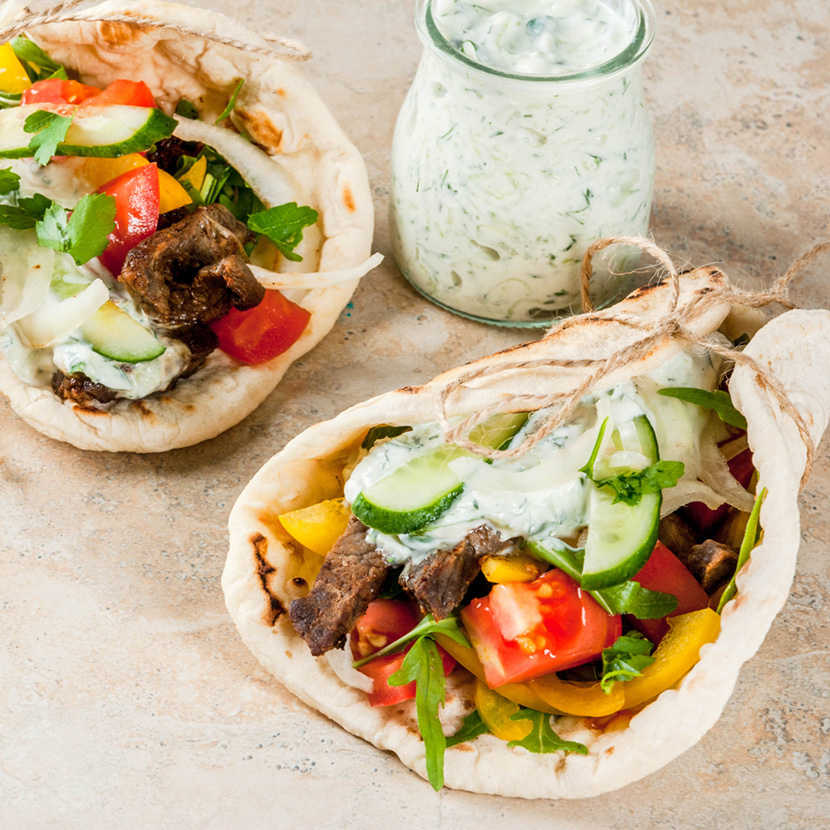
Europe’s green creativity
What began as a trend has developed into a movement that is supported by millions. This change is not only a sign of growing environmental awareness and a responsible approach to animals and the planet’s resources, but also proof of Europe’s culinary innovation. With a pinch of humour and a large portion of creativity, the future of European cuisine will definitely be green and tasty. Because behind all the numbers are great recipes and a kaleidoscope of flavours as diverse as the countries of our continent.
So as Europe moves from cheese lovers to chickpea fans, one question remains unanswered: What will be the next big thing in Europe’s green cuisine? Stay tuned, we’ll keep you updated!
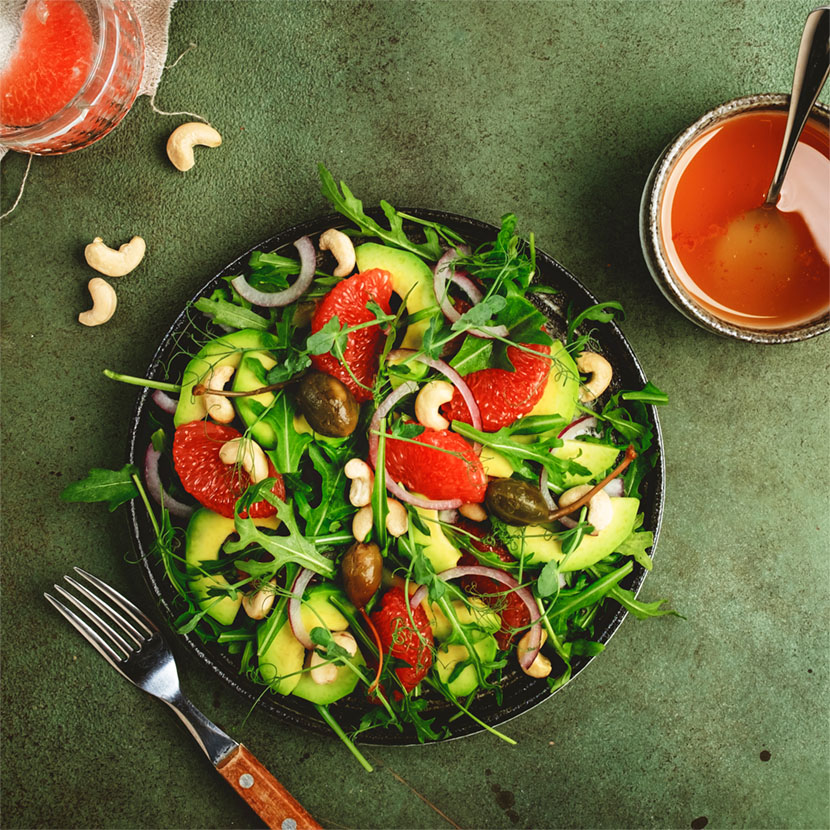
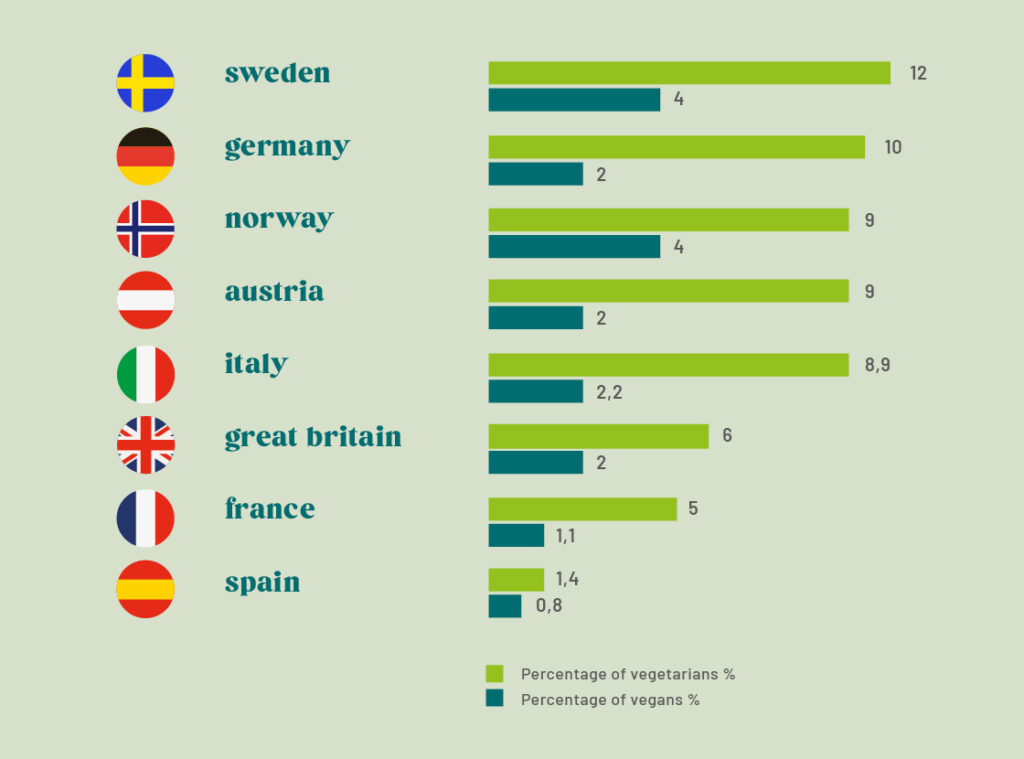
Sources:
¹ ProVeg in partnership with the University of Copenhagen and Ghent University, From 2024
² https://veganivore.de/anzahl-veganer-statistiken-fakten/
The Recipes
Here we have 3 delicious vegan recipes from all over Europe for you to try out. Enjoy, buon appetito and kalí órexi!

